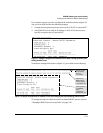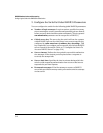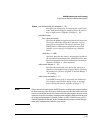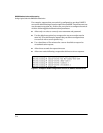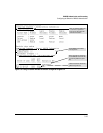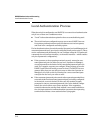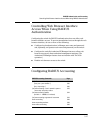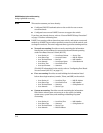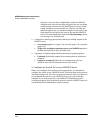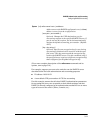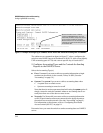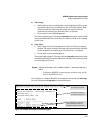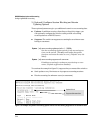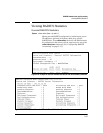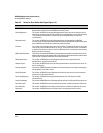
RADIUS Authentication and Accounting
Configuring RADIUS Accounting
The switch forwards the accounting information it collects to the designated
RADIUS server, where the information is formatted, stored, and managed by
the server. For more information on this aspect of RADIUS accounting, refer
to the documentation provided with your RADIUS server.
Operating Rules for RADIUS Accounting
■ You can configure up to three types of accounting to run simulta-
neously: exec, system, and network.
■ RADIUS servers used for accounting are also used for authentication.
■ The switch must be configured to access at least one RADIUS server.
■ RADIUS servers are accessed in the order in which their IP addresses
were configured in the switch. Use show radius to view the order. As
long as the first server is accessible and responding to authentication
requests from the switch, a second or third server will not be
accessed. (For more on this topic, refer to
“Changing RADIUS-Server
Access Order” on page 5-29.)
■ If access to a RADIUS server fails during a session, but after the client
has been authenticated, the switch continues to assume the server is
available to receive accounting data. Thus, if server access fails during
a session, it will not receive accounting data transmitted from the
switch.
Steps for Configuring RADIUS Accounting
1. Configure the switch for accessing a RADIUS server.
You can configure a list of up to three RADIUS servers (one primary, two
backup). The switch operates on the assumption that a server can operate
in both accounting and authentication mode. (Refer to the documentation
for your RADIUS server application.)
• Use the same radius-server host command that you would use to
configure RADIUS authentication. Refer to “2. Configure the Switch
To Access a RADIUS Server” on page 5-10.
• Provide the following:
– A RADIUS server IP address.
– Optional—a UDP destination port for authentication requests.
Otherwise the switch assigns the default UDP port (1812; recom-
mended).
5-19



